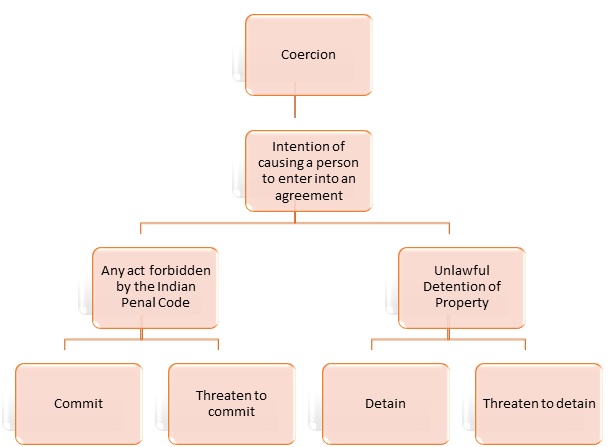FEMALE FOETICIDE: A CRY….. STILL UNHEARD
P.C. dnaindia.com
“Beti bachao! Beti padhao!... If you educate a boy you
educate an individual, if you educate a girl you educate an entire generation!”
These are the slogans we hear every
now and then; they are now on almost every person’s tongue, written on almost
every alternate truck that we see and placed in many hoardings. These slogans
have now been taken for granted and have become equal to any other daily
dialogues taking place between two persons.
Various laws and social awareness
campaigns are being carried out all over
the country, urging people to save the girl child. Ironically, 19
aborted female foetuses were found dumped near a stream in Sangli, Maharashtra
in 2017. The dark truth is that women face prejudice even before they are born.[1]
WHAT IS FEMALE
FOETICIDE?
Female foeticide/infanticide is
carried out through Sex-Selective Abortions[2], wherein first, the sex of the foetus
is assessed and then abortion is done if it is a girl child. The technology commonly
known as the ultrasound technology was developed exclusively to detect any
genetic abnormalities in a child, but later it became easily available to the
public through illegal sex determination centres.
Data released by the
government in 2016 revealed that India’s sex ratio i.e. the number of females
per 1000 males at birth had fallen from 946 in 1949 to 887 in 2014. The number
of girls below 6 per 1,000 boys has also fallen and in 2011, the figure stood
at 914, the lowest since Independence.[3] There are many
laws in India which govern and prohibit the killing of foetuses and infants. However, it is very
difficult to track such cases of female infanticide and most of them go
unnoticed.
LAWS AND REGULATIONS ON
ABORTION/MISCARRIAGE, ILLEGAL SEX DETERMINATION AND FEMALE FOETICIDE
Let us go through some of the laws
which regulate the abortion/miscarriage of a child.
The very first law which has made
abortion legal in India only under specific conditions is the Medical
Termination of Pregnancy Act, 1971[4]. This law particularly restricted
abortion only to three cases, namely- abnormalities in the child, a high health
risk to the mother, and a child conceived due to rape. However, this Act could
not consider the possibilities of sex-selective abortions due to technological
advancements and thus proved to be ineffective.
In The Indian Penal Code, 1860,
section 312 to section 318, punishes persons for abortion if not done in
good faith and for the health and life of the mother and the child. To
understand the basic provision, section 312 says,
“Whoever voluntarily causes a woman
with child to miscarry, shall, if such miscarriage be not caused in good faith
for the purpose of saving the life of the woman, be punished with imprisonment
of either description for a term which may extend to 3 years, or with fine, or
with both; and, if the woman be quick with child, shall be punished with imprisonment
of either description for a term which may extend to seven years, and also be
liable to fine.”
The next following sections constitute
the aggravated forms of this crime, like:
·
Causing
miscarriage without woman’s consent.
·
Miscarriage
leading to the death of the mother.
·
Any
act done to prevent the child from being born alive.
·
Concealment
of birth by secret disposal of the dead body.[5]
Next is the Pre-Conception and
Pre-Natal Diagnostic Techniques (Prohibition of Sex Selection) Act, 2003
(PC-PNDT), which criminalizes it to determine the sex of an unborn child,
using sex-selection technologies. This Act primarily states that ultrasound
centres and genetic laboratories cannot be used for knowing the sex of the
foetus. It also makes the registration of all the ultrasound centres mandatory
and also directs them to maintain records of every scan done during the
pregnancy of a woman.
WHY DO THESE CRIMES GO UNNOTICED?
It is said that it is quite difficult
to trace data related to sex-selective abortions. As most of the abortions are
carried out in an illegal and secretive way, the government agencies have proven
to be ineffective in tracking down the centres where such abortions take place.
If we look at the average annual data, nearly 5 to 6 million abortions take
place every year and over 3/4th of these are by unapproved
facilities.[6]
Some investigations and reports show
that the people who are involved in these sex determination rackets use codes
to communicate and carry out their illegal business. It has been almost 20
years since the PC-PNDT Act came into force but still many cases go unreported.
According to the Act, each district is required to set up a committee called
the Appropriate Authority Committee; however, only a few districts have
constituted such committees.
Another upcoming trend in this
criminal field is ‘Reproductive Tourism’. In countries where sex
determination is banned, people travel to foreign countries where such tests
are allowed to determine the sex of the child. America and Thailand have become
such hubs for reproductive tourism. It has been estimated that around 80-90% of
people from India, China and East Europe go to foreign countries for such
activity. In these cases, it becomes nearly impossible for the Government to
catch hold of such people.[7]
The 10th Common Review
Mission report under the National Health Mission noted that the poor
implementation of the PC-PNDT Act is also one of the main reasons for fewer
convictions for female foeticide. Out of court settlements, lack of evidence
and witnesses add and provoke people to commit such crimes as they know that
they can easily escape punishments.[8]
REPERCUSSIONS OF FEMALE FOETICIDE
The very basic consequence of female
foeticide is the steep difference in the sex ratio. This encourages trafficking of women. A very
brutal example of this can be found in Haryana. Haryana is said to have the
poorest sex ratio due to which there arises difficulty in finding women for
marriage. This in turn leads to trafficking, wherein women from Assam, West
Bengal, and Bangladesh are kidnapped and sold in Haryana.
Dilution in women’s population also
leads to male domination in the society which increases the chances of
exploitation of women. We all agree that women have a multi-faceted role in the
society; even patriarchal sects in the society will have to concede to it. The
decreasing ratio will do nothing but destruct the future.[9]
WHAT IS THE WAY OUT OF IT?
Continuous monitoring and vigilance of
ultrasound centres, hospitals and a bold implementation of laws are the only
ways out of this heinous offence. On the contrary, during this pandemic
situation, the Ministry of Health and Family Welfare has relaxed some rules
under the PC-PNDT Act like the renewal of the registrations, submission of
diagnostic reports by the genetic laboratories or the ultrasound centres.[10] Though it has been made mandatory to
continue maintaining records, even small relaxations or suspension in rules can
pave the way for illegal abortions. To give careful thought, even when the laws
are strict in normal situations, such crimes go unnoticed; it would be not wise
to relax such norms in any matter. Alternatives should be made available when
it is not physically possible to monitor such centres.
Families and relatives who support sex
determination and female foeticide need to be convinced about the ill effects
of it and that bearing a girl child does not burden the family. Doctors and
nursing homes are generally in a dominant position that can refuse to carry out
sex-selective abortions and respect medical ethics which can help curb such
practices to a large extent.
Since long, inadequate implementation
of laws, lethargic behaviour of administrative authorities, and lack of
awareness and education have been the root causes of the majority of problems
in India; female foeticide is one of them.
BY
SAYALI MANDLIK
3RD B.A.LL.B.
ILS LAW COLLEGE
[1]19 Female foetuses found in Sangli, Maharashtra seeks help from
Karnataka, India
Today (06/03/2017), https://www.indiatoday.in/india/maharashtra/story/sangli-female-foetuses-maharashtra-964219-2017-03-06 last seen on 27/12/2020.
[2] R Usha, Sayeed Unisa & Suchitra Pujari, Sex Selective Abortion
in India, 42(01) Economic & Political Weekly, available at https://www.epw.in/journal/2007/01/special-articles/sex-selective-abortion-haryana.html, last seen on 28/12/2020.
[3] Beti
Bachao: Government’s Efforts To
Eradicate Female Infanticide and Sex Selective Abortion Are Inadequate, EPW
Engage (22/11/2019), available at https://www.epw.in/engage/article/beti-bachao-eradicate-female-infanticide-violence-against-women-girls-abortion#:~:text=Data%20released%20by%20the%20government,1949%20to%20887%20in%202014. last seen on 27/12/2020.
[4] Supra 2.
[5] PSA Pillai, Criminal Law, Chapter 35, 12th edition.
[6] Supra 2.
[7] India witnesses the highest female infanticide incidents in the
world: Study, Down to Earth (19/09/2018), available at https://www.downtoearth.org.in/news/health/india-witnesses-one-of-the-highest-female-infanticide-incidents-in-the-world-54803, last
seen on 29/12/2020.
[8] PCPNDT Act implementation poor in several states: Report,
Financial Express (03/06/2017), available at https://www.financialexpress.com/india-news/pcpndt-act-implementation-poor-in-several-states-report/698888/last seen on 29/12/2020.
[9] Dr. Ishita Chatterjee, The
Evil of Female Foeticide In India: Causes, Consequences and Prevention,
Legal Service India, available at http://www.legalserviceindia.com/legal/article-777-the-evil-of-female-foeticide-in-india-causes-consequences-and-prevention.html last seen on 30/12/2020.
[10] Beti Bachao: Government’s Efforts to Eradicate Female Infanticide
and Sex-Selective Abortion are Inadequate, Medical Dialogues, (10/04/2020) https://medicaldialogues.in/news/health/government-policies/no-pndt-act-has-not-been-suspended-only-certain-provisions-relaxed-health-ministry-issues-clarification-64722, last seen on 30/12/2020.




Comments
Post a Comment